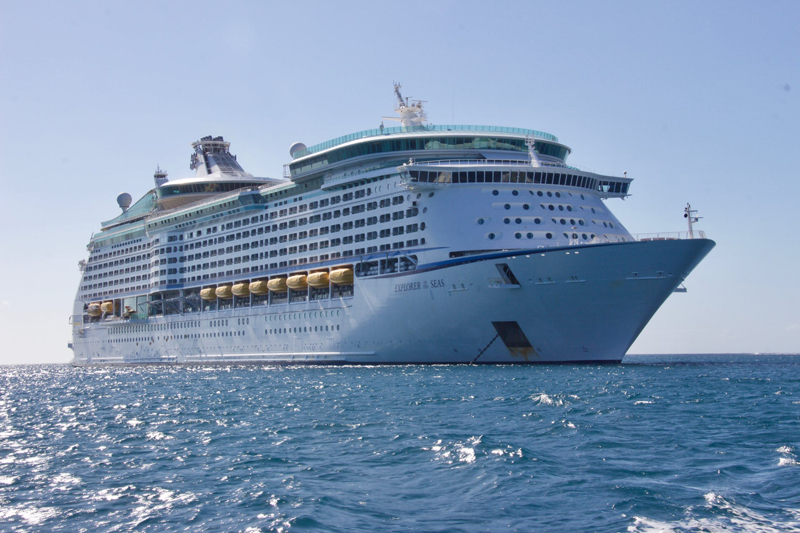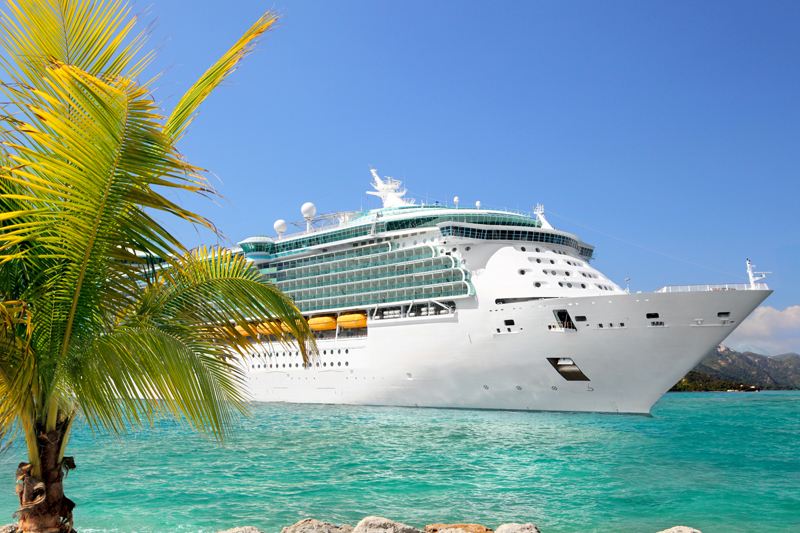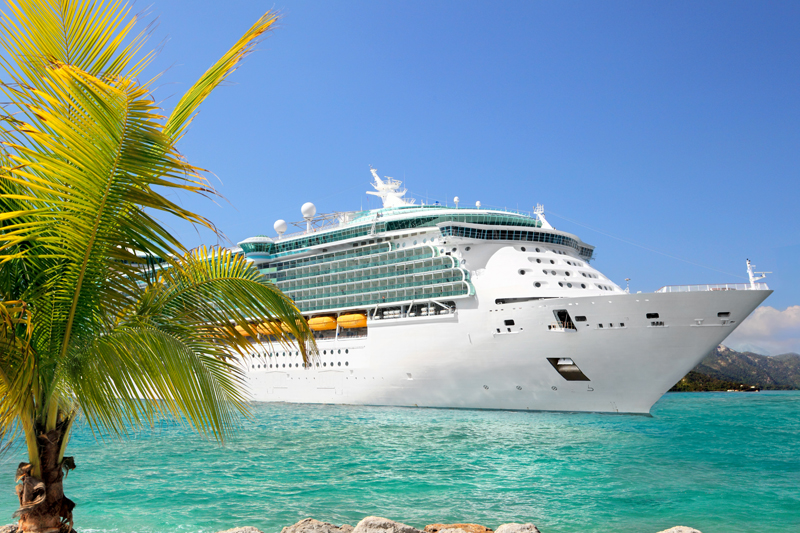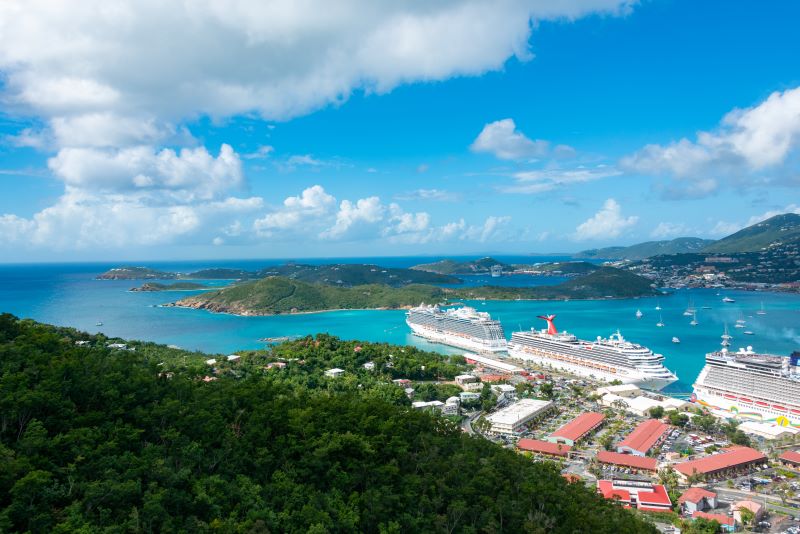Add Peru To Your Vacation Itinerary

Destinations in South America are topping many active vacationers’ travel bucket lists this year. From cruises and land trips in the Galapagos to Machu Picchu treks, the lure of South America is strong. For those flying south, Peru is a country that shouldn’t be missed.
Cruises on Holland America, Celebrity, Oceania, Silversea and others depart from Lima’s port of Callao, offering opportunities for extensive pre- or post-cruise exploration. Additional cruise ship itineraries call at the port of Callao for several nights. A quick trip to Machu Picchu and the Sacred Valley can also be added onto a Galapagos cruise or land trip if travelers have time.
Here are five of Peru’s top options to include on your South American vacation itinerary:
1. Machu Picchu. As one of the New 7 Wonders of the World, Machu Picchu is a bucket list destination for many vacationers. Over 1.2 million travelers from around the globe come to see this UNESCO World Heritage Site each year. Machu Picchu is a deeply moving and spiritual place. Time there should be savored, so plan to spend at least one or two full days taking it all in. Visits to Machu Picchu can take several different forms. Travelers can trek in via the Inca Trail, do a lodge-to-lodge journey to Machu Picchu via the Salkantay Trail, or take the train from Ollantaytambo in the Sacred Valley to the town of Aguas Calientes at the base of Machu Picchu. Visitors then travel up to the Lost City of the Incas via bus from there. Make sure to visit with a highly knowledgeable guide to make the most of your time at the site.
Those wishing to stay in the area overnight should consider booking the Inkaterra Machu Picchu Pueblo Hotel in Aguas Calientes. The property provides a luxurious home base for exploring the area as well as several unique attractions of its own. These include private nature walks along the resort’s orchid trail, bird watching excursions, and visits to the hotel’s Spectacled Bear Project to see and learn about these highly endangered animals.
2. Cusco. Tours to Machu Picchu often begin and end in Cusco. This vibrant city sits at an altitude of well over 11,000 feet, so it’s important to acclimatize when arriving. There’s a lot to experience in this region, but take it slow and stay hydrated. Plan to spend some time visiting Cusco’s beautiful Basilica of the Assumption of the Virgin with its impressive collection of paintings. The massive Cathedral is located along the Plaza de Armas, Cusco’s main square. While in Cusco, make sure to visit the ruins of the Inca walled fortress at Sacsayhuaman along with Kenko, Puka Pukara and Tambomachay. Coricancha, the Inca Temple of the Sun, and the overlaying church of Santo Domingo should be seen as well. Cusco is also an excellent spot for shopping and dining. Sample some delicious Peruvian dishes at Cicciolina and have a drink at the Fallen Angel. The Palacio del Inka is an excellent hotel option here.
3. The Sacred Valley. No trip to Machu Picchu is complete without spending several nights in Peru’s Urubamba Valley. Known as the Sacred Valley of the Incas, this area encompasses tiny towns full of ancient Inca sights and numerous opportunities for authentic cultural experiences. Visiting families will want to stop at Santuario Ccochahuasi to see an array of local animals and endangered condors as well as the full range of South American camelids at nearby Awanacancha. The Sacred Valley is filled with traditional weaving communities, including Ccaccaccollo and Chinchero. Here, visitors can meet and interact with local women to learn about their ancient dyeing, weaving and knitting techniques passed down from the time of the ancient Incas. A wide variety of hand woven items made from alpaca and wool are available for sale directly from local artisans. Vibrant markets filled with vendors are held in Pisac and Chinchero on selected days of the week. These spots are good sources for souvenirs as well.
The Sacred Valley is also filled with ancient Inca archeological sites. Visitors marvel at the massive fortresses and staggered terraces found Ollantaytambo and Pisac. The circular terraced agricultural experimentation areas constructed by the Incas at Moray are incredible, too. Nearby are hundreds upon hundreds of salt pans built by the Incas near Maras. Sprawling down the side of a steep hill in a staggering patchwork quilt of browns, pinks, tans and whites - these salt pans are still active and being worked to this day. Bike tours often head to this area, and horseback riding and whitewater rafting trips are also offered in this region. Once here, stay for several nights at one of the wonderful Sacred Valley lodges such as Sol & Luna. Set in beautiful gardens, this charming property offers a variety of luxurious accommodations and activities including horseback riding and a superb spa. This community-focused lodge has created a local school and educational project for the children of the Urubamba region. Bring along some school supplies to help support their cause.
4. Lima. Many travelers barely stop in Lima to stay overnight near the international airport before quickly whisking away to Cusco. That's a mistake. There is so much to see and savor in Peru’s capital city. Hire a guide and plan to spend at least one full day here seeing the sights. The extensive private pre-Columbian art collection at the Larco Herrara Museum deserves a minimum of a half-day visit. The museum’s restaurant is excellent for lunch as well. Head into the center of historic Lima to see the Plaza Mayor, the Cathedral of Lima, the Archbishop’s Palace, the Monastery of San Francisco with its unique catacombs, Santo Domingo Church and other highlights.
Lima’s Miraflores neighborhood is a good place for visitors to stay and it has much to see, too. Built between 200-700 AD, the pre-Inca pyramid of Huaca Pucllana is a good spot to visit for lovers of history. Once finished your tour, wander over to the local market for some souvenir shopping and stop at Parque Del Amor to admire the beautiful water views. Casa Andina Private Collection is good family friendly, centrally located hotel in this area. Seafood lovers should plan to have lunch or dinner at Alfresco in Miraflores. The fresh ceviches here are outstanding.
5. Amazon River Cruises. Peru’s Amazon region contains some of the world’s most amazing wildlife, from pink dolphins and three-toed sloths to howler monkeys, parrots, colorful macaws and piranhas. Small ship cruises are one of the best ways to explore this region. These cruises offer guests the opportunity to meet the Amazonian people and see the wide array of plants and wildlife living in the area. Most cruises leave from the port of Iquitos, just a short direct flight from Lima.
If You Go:
* Use a highly rated tour operator to help plan your trip, such as Austin Adventures. Named one of the World’s Best Top Tour Operators by Travel + Leisure, Austin Adventures has highly experienced guides and over 40 years of experience running adventure tours. Austin Adventures offers their Peru trips in partnership with Apumayo Expediciones, a highly-experienced local company based in Cusco. For more information, visit visit www.austinadventures.
Cruises on Holland America, Celebrity, Oceania, Silversea and others depart from Lima’s port of Callao, offering opportunities for extensive pre- or post-cruise exploration. Additional cruise ship itineraries call at the port of Callao for several nights. A quick trip to Machu Picchu and the Sacred Valley can also be added onto a Galapagos cruise or land trip if travelers have time.
Here are five of Peru’s top options to include on your South American vacation itinerary:
1. Machu Picchu. As one of the New 7 Wonders of the World, Machu Picchu is a bucket list destination for many vacationers. Over 1.2 million travelers from around the globe come to see this UNESCO World Heritage Site each year. Machu Picchu is a deeply moving and spiritual place. Time there should be savored, so plan to spend at least one or two full days taking it all in. Visits to Machu Picchu can take several different forms. Travelers can trek in via the Inca Trail, do a lodge-to-lodge journey to Machu Picchu via the Salkantay Trail, or take the train from Ollantaytambo in the Sacred Valley to the town of Aguas Calientes at the base of Machu Picchu. Visitors then travel up to the Lost City of the Incas via bus from there. Make sure to visit with a highly knowledgeable guide to make the most of your time at the site.
Those wishing to stay in the area overnight should consider booking the Inkaterra Machu Picchu Pueblo Hotel in Aguas Calientes. The property provides a luxurious home base for exploring the area as well as several unique attractions of its own. These include private nature walks along the resort’s orchid trail, bird watching excursions, and visits to the hotel’s Spectacled Bear Project to see and learn about these highly endangered animals.
2. Cusco. Tours to Machu Picchu often begin and end in Cusco. This vibrant city sits at an altitude of well over 11,000 feet, so it’s important to acclimatize when arriving. There’s a lot to experience in this region, but take it slow and stay hydrated. Plan to spend some time visiting Cusco’s beautiful Basilica of the Assumption of the Virgin with its impressive collection of paintings. The massive Cathedral is located along the Plaza de Armas, Cusco’s main square. While in Cusco, make sure to visit the ruins of the Inca walled fortress at Sacsayhuaman along with Kenko, Puka Pukara and Tambomachay. Coricancha, the Inca Temple of the Sun, and the overlaying church of Santo Domingo should be seen as well. Cusco is also an excellent spot for shopping and dining. Sample some delicious Peruvian dishes at Cicciolina and have a drink at the Fallen Angel. The Palacio del Inka is an excellent hotel option here.
3. The Sacred Valley. No trip to Machu Picchu is complete without spending several nights in Peru’s Urubamba Valley. Known as the Sacred Valley of the Incas, this area encompasses tiny towns full of ancient Inca sights and numerous opportunities for authentic cultural experiences. Visiting families will want to stop at Santuario Ccochahuasi to see an array of local animals and endangered condors as well as the full range of South American camelids at nearby Awanacancha. The Sacred Valley is filled with traditional weaving communities, including Ccaccaccollo and Chinchero. Here, visitors can meet and interact with local women to learn about their ancient dyeing, weaving and knitting techniques passed down from the time of the ancient Incas. A wide variety of hand woven items made from alpaca and wool are available for sale directly from local artisans. Vibrant markets filled with vendors are held in Pisac and Chinchero on selected days of the week. These spots are good sources for souvenirs as well.
The Sacred Valley is also filled with ancient Inca archeological sites. Visitors marvel at the massive fortresses and staggered terraces found Ollantaytambo and Pisac. The circular terraced agricultural experimentation areas constructed by the Incas at Moray are incredible, too. Nearby are hundreds upon hundreds of salt pans built by the Incas near Maras. Sprawling down the side of a steep hill in a staggering patchwork quilt of browns, pinks, tans and whites - these salt pans are still active and being worked to this day. Bike tours often head to this area, and horseback riding and whitewater rafting trips are also offered in this region. Once here, stay for several nights at one of the wonderful Sacred Valley lodges such as Sol & Luna. Set in beautiful gardens, this charming property offers a variety of luxurious accommodations and activities including horseback riding and a superb spa. This community-focused lodge has created a local school and educational project for the children of the Urubamba region. Bring along some school supplies to help support their cause.
4. Lima. Many travelers barely stop in Lima to stay overnight near the international airport before quickly whisking away to Cusco. That's a mistake. There is so much to see and savor in Peru’s capital city. Hire a guide and plan to spend at least one full day here seeing the sights. The extensive private pre-Columbian art collection at the Larco Herrara Museum deserves a minimum of a half-day visit. The museum’s restaurant is excellent for lunch as well. Head into the center of historic Lima to see the Plaza Mayor, the Cathedral of Lima, the Archbishop’s Palace, the Monastery of San Francisco with its unique catacombs, Santo Domingo Church and other highlights.
Lima’s Miraflores neighborhood is a good place for visitors to stay and it has much to see, too. Built between 200-700 AD, the pre-Inca pyramid of Huaca Pucllana is a good spot to visit for lovers of history. Once finished your tour, wander over to the local market for some souvenir shopping and stop at Parque Del Amor to admire the beautiful water views. Casa Andina Private Collection is good family friendly, centrally located hotel in this area. Seafood lovers should plan to have lunch or dinner at Alfresco in Miraflores. The fresh ceviches here are outstanding.
5. Amazon River Cruises. Peru’s Amazon region contains some of the world’s most amazing wildlife, from pink dolphins and three-toed sloths to howler monkeys, parrots, colorful macaws and piranhas. Small ship cruises are one of the best ways to explore this region. These cruises offer guests the opportunity to meet the Amazonian people and see the wide array of plants and wildlife living in the area. Most cruises leave from the port of Iquitos, just a short direct flight from Lima.
If You Go:
* Use a highly rated tour operator to help plan your trip, such as Austin Adventures. Named one of the World’s Best Top Tour Operators by Travel + Leisure, Austin Adventures has highly experienced guides and over 40 years of experience running adventure tours. Austin Adventures offers their Peru trips in partnership with Apumayo Expediciones, a highly-experienced local company based in Cusco. For more information, visit visit www.austinadventures.

Related Articles
Editor's Picks Articles
Top Ten Articles
Previous Features
Site Map
Content copyright © 2023 by Nancy Schretter. All rights reserved.
This content was written by Nancy Schretter. If you wish to use this content in any manner, you need written permission. Contact Nancy Schretter for details.






